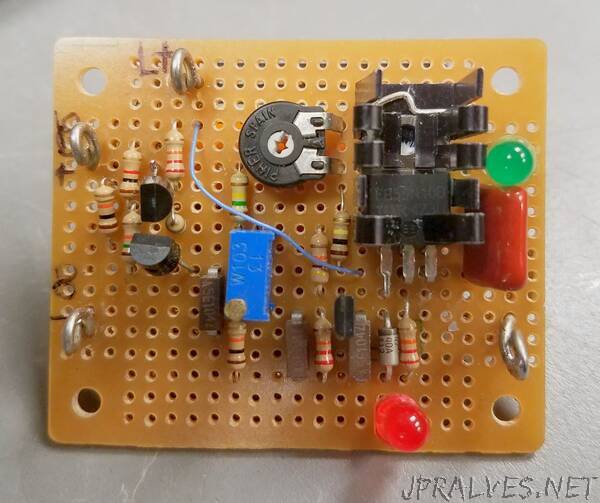
“In a previous post I described a simple circuit that provided a low-voltage cut-out that could be used in a battery-operated system - see the article “A latching low-voltage disconnect for 12 volt lead-acid and lithium batteries”.
That circuit - intended mostly for lithium-based batteries - required manual intervention to “reset” the device, intended for those situations where you wanted to provide manual intervention in resetting the circuit to prevent causing harm to the battery - and maybe the gear connected to it.
This circuit is different from that described in the link above, intended for lead-acid battery based systems where an automatic reconnect of the battery is required when the battery voltage rises above a threshold voltage after application of charge current. An example of where this would be useful is a system in which the battery is charged by a main-powered DC supply that is used to keep the battery charged where the battery will power the load in the event of a power failure.
Why would we worry about this?
Related to this, let’s briefly talk about maximizing longevity of lead-acid batteries:
For best longevity, the shallower the discharge, the better. A classic example of this is a solar-powered system where there is a daily discharge. If the battery were sized too small such that it was discharged from “full” to 30% every day, it might last only a year or so at best, but by increasing the battery size such that it was only discharged to 75% worst-case, the cycle depth would be much shallower and the battery would last much longer. This assumes, of course, that there is enough charging capacity to do this, which can be an issue for a solar charge system in the winter and/or periods of weather where there is little direct sun.
Lead-acid batteries can handle being run completely down - as long as you don’t keep them in that state for very long (a few days at most - as little time as possible) and don’t do it very often - and the more charge you can leave on them at the deepest point of discharge, the better. In other words, if you run an otherwise healthy lead acid battery completely dead and immediately recharge it, little immediate damage is likely to have been done other than taking a bit of life off it farther down the road as most lead-acid batteries can only handle a few hundred of such cycles before they are significantly and permanently degraded. (The previous statement applies only to “Deep Cycle” lead-acid batteries: Automotive “starting” batteries do not fall into this category - They can be permanently damaged by as few as dozen or two “complete” discharge cycles in some cases.)
In cold-weather environments, while the degradation (primarily sulfation) caused by the battery being dead for extended periods is dramatically slowed, extremely deep discharge also reduces the specific gravity, raising the electrolyte’s freezing point and increasing the possibility of the battery being damaged/destroyed at very low temperatures if it does get cold enough to freeze the electrolyte. Preventing too-deep a discharge by disconnecting the load while there is still some capacity left can reduce the probability of this happening. (This can happen with both flooded cell and AGM batteries.)
Important: A general rule of thumb is that above approximately 70F (approx 20C) for every 10F (approx. 5.5c) increase in temperature, the expected lifetime of a lead-acid battery is approximately halved. Carefully consider this if the battery is to be in a location that might get warm/hot.
For several of the reasons mentioned above, a low-voltage disconnect circuit is essential in systems where there is the distinct possibility that the battery could be completely discharged - both to prevent the loss of battery capacity due to over-discharge (e.g. sulfation if the battery is left “flat” for a long time) as well as preventing freezing of the electrolyte when the battery is deeply discharged where/when that is a concern.”
